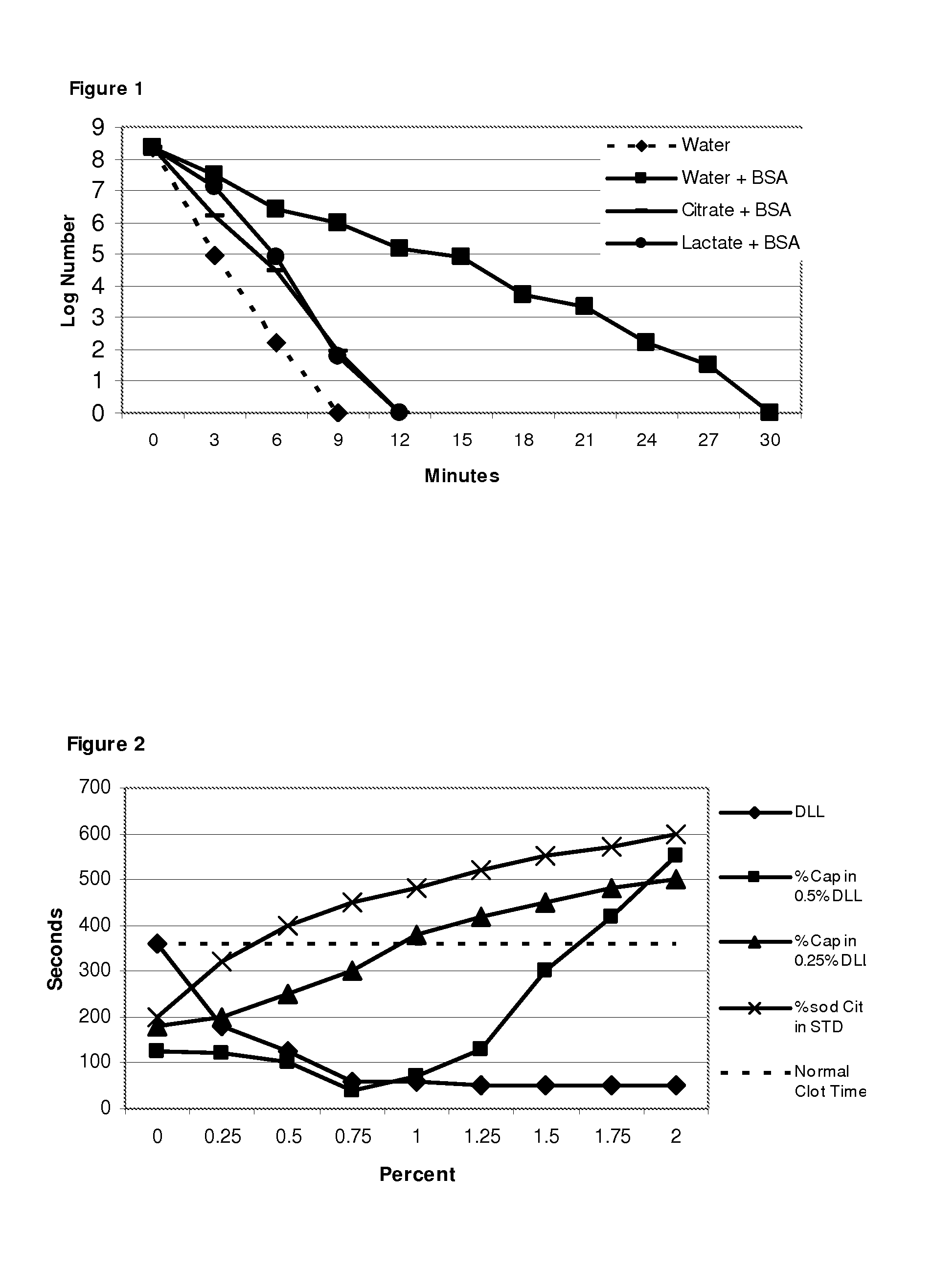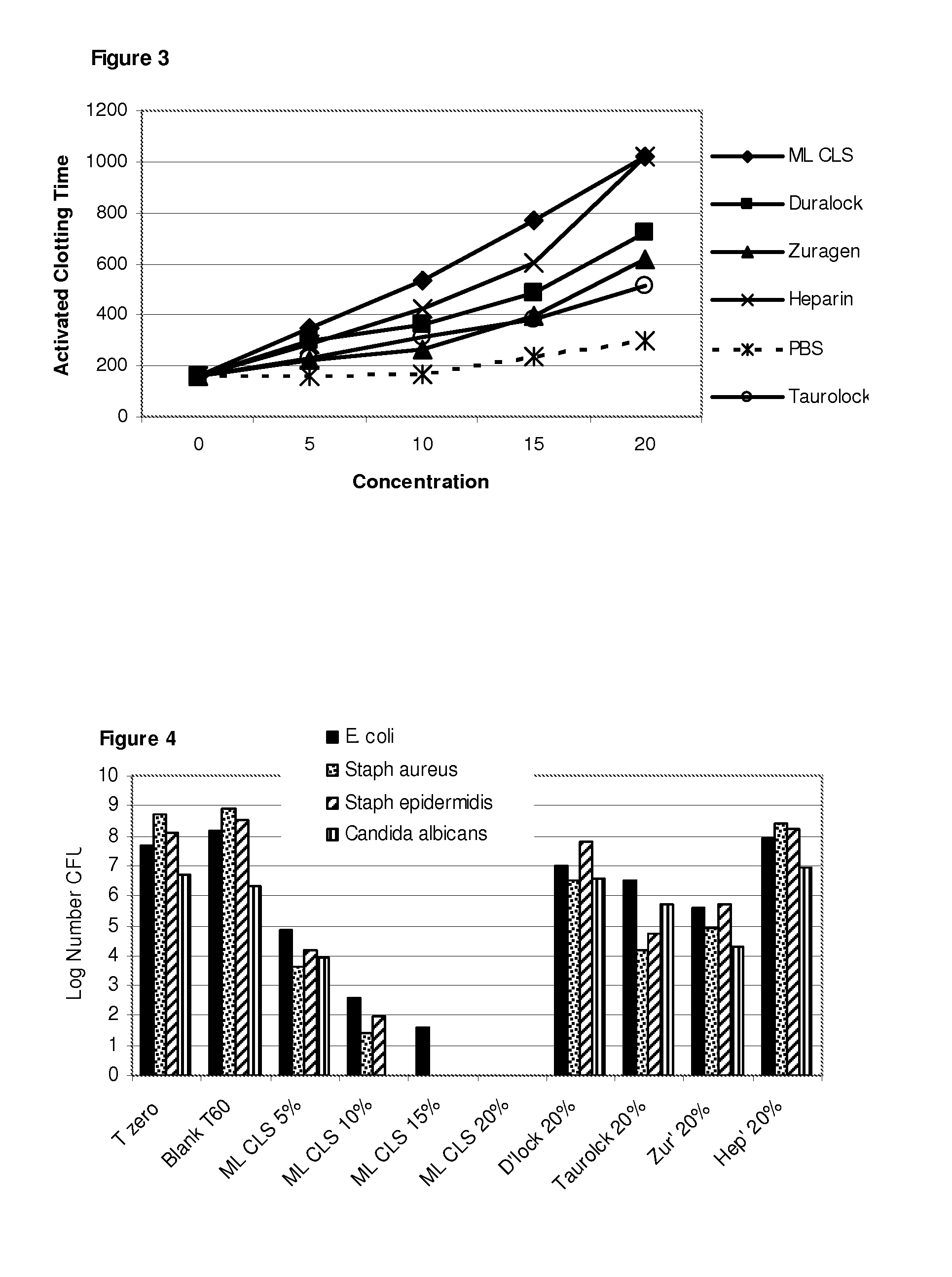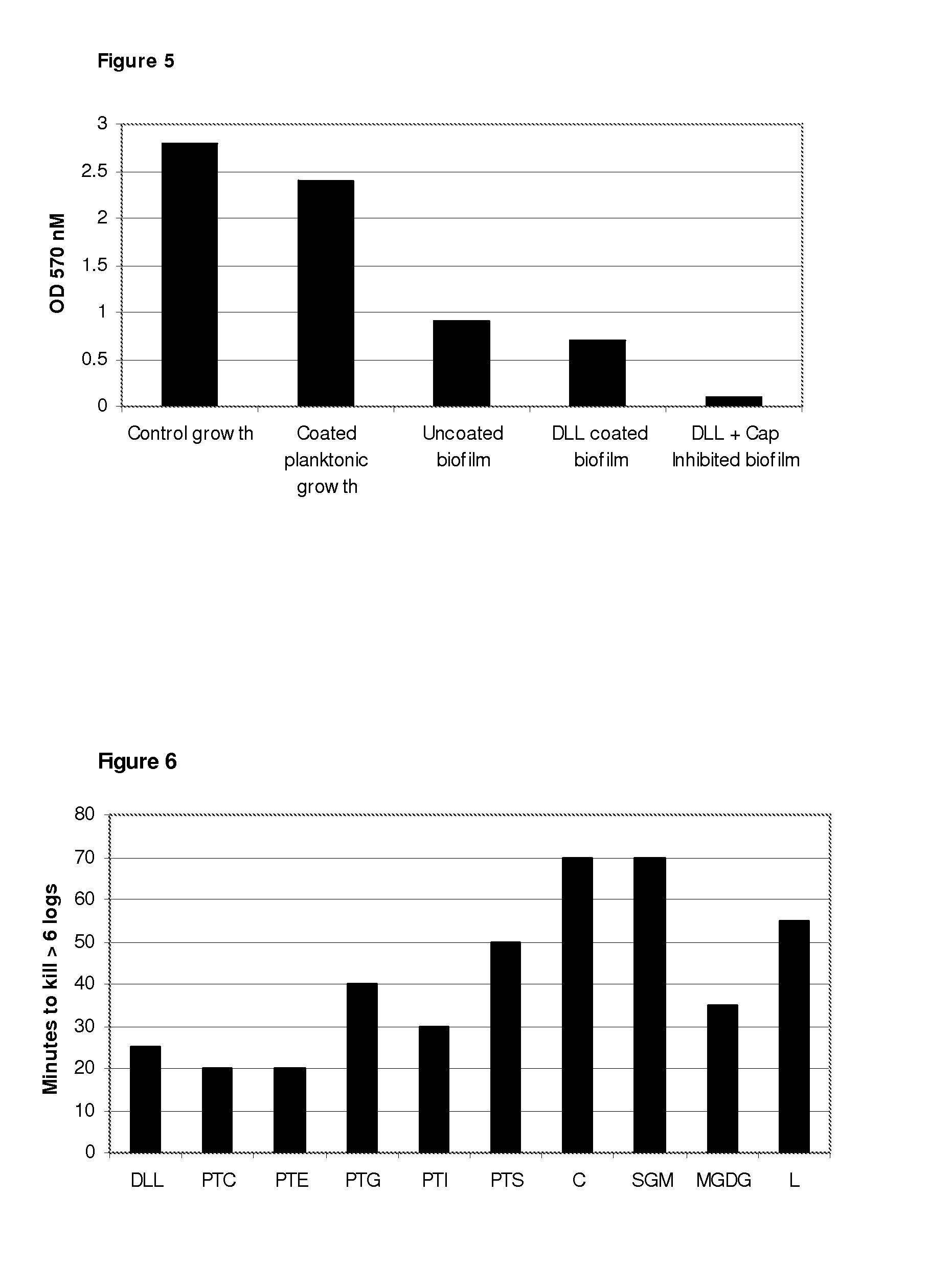Antimicrobial compositions containing free fatty acids
a technology of free fatty acids and compositions, which is applied in the direction of biocide, plant growth regulators, pharmaceutical non-active ingredients, etc., can solve the problems of restricting the medicinal use of the drug to date, and achieve the effect of difficult cultur
- Summary
- Abstract
- Description
- Claims
- Application Information
AI Technical Summary
Benefits of technology
Problems solved by technology
Method used
Image
Examples
example 1
Preparation of Adhesion Inhibitory Compositions of Membrane Lipids
[0141]The following membrane lipids were purchased from Sigma Aldrich, Poole, Dorset, UK.
[0142]
TABLE 3Membrane lipidsOriginalMembrane lipidCompound / ComponentsourceCodePhospholipidCrude LecithinSoya BeanLCPhospholipidPhosphatidylcholineSoya BeanPTCPhospholipidPhosphatidylethanolamineSoya BeanPTEPhospholipidPhosphatidylglycerolSoya BeanPTGPhospholipidphosphatidylinositolSoya BeanPTIPhospholipidPhosphatidylserineSoya BeanPTSSphingolipidCeramideBovine BrainCSphingolipidSphingomyelinBovine BrainSGMGlycoglycerolipidMono-galactosylWheat flourMGDGdiglycerideCholesterolLanosterolSheep woolL
Crude lecithin was purchased from GR Lane Ltd, Gloucester, UK.
[0143]Aqueous dispersions of each of the above membrane lipids were prepared by suspending 1.0 grams in 100 ml of sterile distilled water (10 mg / ml) and agitating therein for 60 minutes with the aid of a magnetic stirrer. Dispersion of ceramide, sphingomyelin and lanosterol was ac...
example 2
Preparation and Testing of Microbicidal Combinations of Membrane Lipid and Free Fatty Acid
[0153]The microbicidal effect of 0.5% caprylic acid in 0.4% de-lipidised lecithin, prepared as described in the Methods, against a range of microbial species may be demonstrated using the microbicidal suspension test described in the Methods. The potency of this material is such that complete eradication of an inoculum in excess of 6 logs may be anticipated in less than 6 minutes. Gram negative species are slightly more resistant than gram positives, particularly those known to be slime producers, such as Escherichia coli and Pseudomonas fluorescens, where it is thought that the slime layer protects from contact with the fatty acid for some additional minutes.
[0154]Table 7 below illustrates the reduction in viability of a range of bacteria and yeast. Because the inoculums vary, the latest time to achieve 50% in viability of the inoculum is provided in the last column (L. T. 50%), as a comparati...
example 3
Membrane Lipid Antimicrobials in Blood Contact Applications
[0159]In common with the negative effect on adhesion inhibitory properties reported in Example 1, the presence of bovine serum albumin also impacts on the microbicidal effect. However as in Example 1, this can be overcome by incorporation of an organic acid salt, at acid pH.
[0160]An oil-in-water emulsion of 0.5% caprylic acid in 0.4% de-lipidised lecithin is used in this Example. 200 mM solutions of glycolic, acetic, lactic, and citric acids were adjusted to pH 4.5 using 200 mM sodium hydroxide. 10% W / V solutions of Bovine Serum Albumin were prepared in each of the organic acid salts and in water as a control. 5 ml aliquots of the 0.5% caprylic emulsion were added to 5 ml aliquots of each salt solution with and without BSA, and in water with and without BSA, resulting in dispersions of 0.25% caprylic emulsion in 0.2% de-lipidised lecithin dispersed in 100 mM salt solution at pH 4.5 in each test sample.
[0161]E. coli was selec...
PUM
| Property | Measurement | Unit |
|---|---|---|
| temperature | aaaaa | aaaaa |
| molar concentration | aaaaa | aaaaa |
| molar concentration | aaaaa | aaaaa |
Abstract
Description
Claims
Application Information
 Login to View More
Login to View More - R&D
- Intellectual Property
- Life Sciences
- Materials
- Tech Scout
- Unparalleled Data Quality
- Higher Quality Content
- 60% Fewer Hallucinations
Browse by: Latest US Patents, China's latest patents, Technical Efficacy Thesaurus, Application Domain, Technology Topic, Popular Technical Reports.
© 2025 PatSnap. All rights reserved.Legal|Privacy policy|Modern Slavery Act Transparency Statement|Sitemap|About US| Contact US: help@patsnap.com



